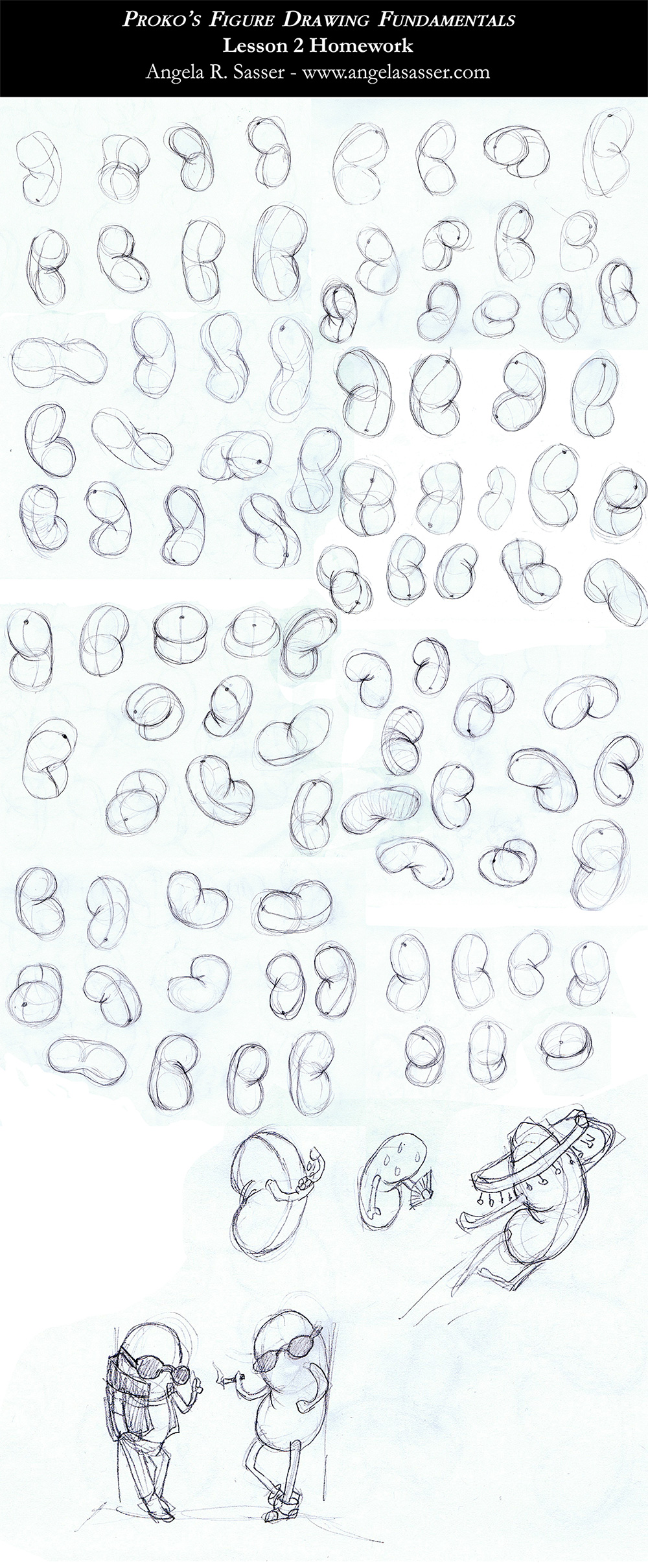So a lot of big changes have been stewing in the pot for me. With the decision to switch focus to more concept oriented work, I’ve been gathering resources to study not just design and the game industry, but also sources to help me in this challenging transition from traditional to digital media. I’ve also realized I need to step up my fundamentals, especially anatomy, perspective, and my old enemy – the background environment!

I feel like I’m going back to school again, which is kind of exciting! I miss studying and learning new things and even considered picking up some classes here at SCAD-Atlanta again with my alumni discount, but I figure I would try the self-study route first and see what happens before getting myself into more student debt than I already have. I learned about student discount squirrel, its an amazing site that has discounts for everything! It definitely helps me since I am on a tight budget. No doubt this is going to be a willpower-driven endeavor, but I CAN do this!
I feel like I’m shooting myself in the foot here, but due to the amount of time I should be studying instead of toiling into the night on commissions, I am shutting down private commissions UNLESS they have no deadlines whatsoever. I’m still going to finish the ones in my queue, but from now on, you will only be able to purchase custom work from me based on what is available in the Custom Items section of my Etsy shop (masks, keychains, pendants, earrings, etc. Mainly my crafts). I am still available for commercial and corporate work, however! I do need money, but I need my sanity more!
Rather than feel like I’m taking something away from you guys, I figured I’d offer something new – Portfolio Reviews! If you would like me to look at your work and provide constructive criticism of your strengths and weaknesses, send me an email with a link to 8-10 pieces, your name, a bit about what industry you’re aiming for, and your website link with the SUBJECT: Portfolio Review. If you don’t know what industry you’re aiming for, let me know and I can always suggest what comes to mind in my humble opinion based on the work you present to me. It’s a great way to get your work featured here, which I’ll be doing once a week once I have somebody to feature!
Finally, I figured I’d share my list of study sources just in case anyone else is curious or going through this same transition. I’m on the lookout for more sources also, if anyone has any suggestions!:
Anatomy Books:
ImagineFX Presents: Anatomy – A nice collection of common problem anatomy areas complete with many charts, photos, and contour drawings by top notch artists. I snagged this one digitally for a low cost.
Atlas of Human Anatomy for the Artist – This is a somewhat dated book, but the section on different body types, expressions, and the effect of aging are exceedingly useful! Also, you can’t beat $6 for a used copy.
Figure Drawing: Design and Invention – Breaking down the body into simplified shapes and contours. I love the approach of the gesture method used to establish the energy of a pose first before trying to construct the heavier lines, muscles, and forms. Energy is important and I feel this book is going to help me with my stiff figure problems.
Digital Coloring Books:
Imagine FX Presents: Fantasy Workshop – I’m a big fan of ImagineFX magazine for its inspiring tutorials and wonderful art from the game industry. This collection gathers many of the artists from their first run of magazines for specific techniques and tricks with screenshots for how the effects were achieved digitally. Unlike the 2nd book, which just gathers pre-existing workshops.
Digital Painting in Photoshop – Just a basic book on Photoshop tools. I know most of it, but there are some holes in my knowledge as far as file processing and setting up workspace and workflow. Sometimes it’s good to get back to essentials, especially when you’re self-taught and might have some glaring knowledge holes that could come to light in a digital job.
Digital Masters Collection: Volume 1 – Digital Painting Techniques – A straight up digital fantasy and scifi art book with instructions on how each image was made from pros in the industry.
Concept Art Books:Avatar: The Last Airbender (The Art of the Animated Series) – Admittedly motivated by wanting this for my personal collection, but what better way to learn than to study this series that has inspired me so greatly? I intend to learn much from the designs which are so similar to the subject matter I’d love to be hired for, with particular attention paid to how they had to simplify the designs to work for television animation.
Game Art: Creation, Direction, and Careers – Also somewhat dated (as they’re still talking about looking forward to nextgen systems like ps3), but the info on what sort of staff makes up a video game development company and what one should expect in their job is golden!
Instructional Videos:
CGMWORKSHOPS – A wonderful channel on YouTube showcasing the videos of various master artists and designers.
FZDSCHOOL – A channel on YouTube featuring videos from an amazing school of design with easy to follow videos on basic design concepts and digital painting techniques.
TheArtDepartment.org – An offshoot of conceptart.org for their instructional workshops. Amazingly, I just noticed in checking the site this morning that their videos are STILL on sale for $7.99! Personally, I’ve grabbed their workshops on color, composition, and perspective with a few of Jason Chan’s character videos.
And that’s all for now! Let the learning begin. My sponge brain is ready! Or perhaps it’s just spongy from all those marker fumes…hrmmm…




